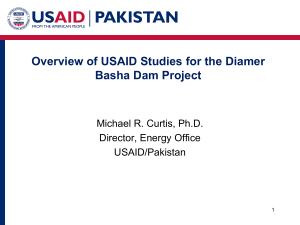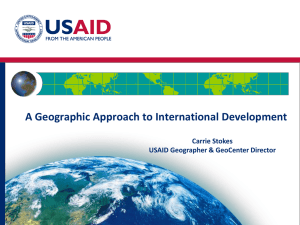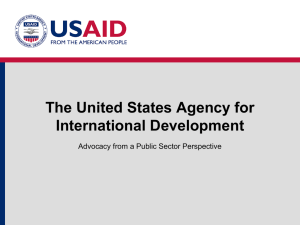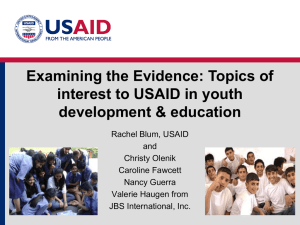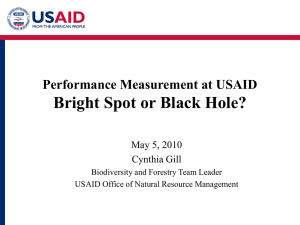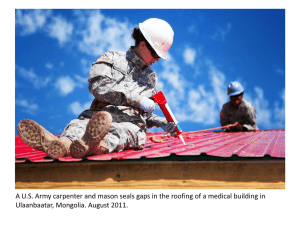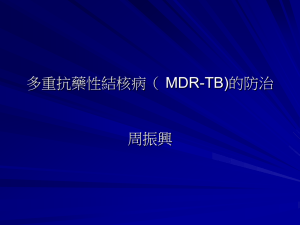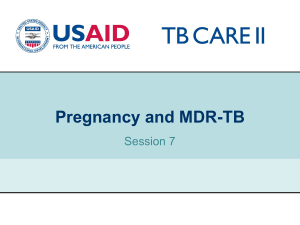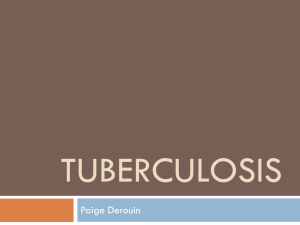Session 2 Presentation: Introduction to DR TB
advertisement
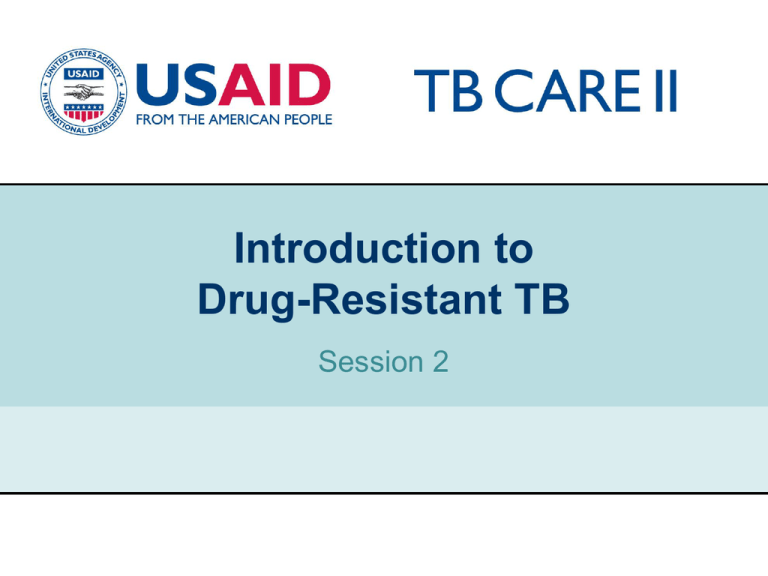
Introduction to Drug-Resistant TB Session 2 1 Classification of drug-resistant TB “Drug-resistant TB” is a general term to describe a strain of M. tuberculosis that is resistant to one or more anti-TB drugs. Terminology Resistance to Mono-resistance One drug Poly-resistance At least two drugs (excluding both H and R) Multidrug resistance (MDR) At least H and R Extensive drug resistance (XDR) H and R plus a second line injectable and a quinolone USAID TB CARE II PROJECT What is drug resistance? “When we say that a strain of tubercle bacilli is drug-resistant we usually mean that a patient yielding such organisms would fail to respond to treatment with the drug concerned in normal dosage, i.e. a dosage that will cause a response in patients infected with sensitive organisms.” – Mitchison DA. “What is drug resistance?” Tubercle Suppl 1969; 50: 44-47. USAID TB CARE II PROJECT How is drug resistant TB created? “…any sensitive strain of tubercle bacilli contains a few organisms which are naturally resistant, sometimes to high drug concentrations. They have arisen by a process of mutation and are called mutants…When this population comes into contact with the therapeutic concentrations of either streptomycin or isoniazid, the sensitive bacilli are killed, whereas the few resistant mutants can multiply and eventually constitute the whole strain…” – Mitchison DA. “Problems of drug resistance,” British Medical Bulletin 1954; 10: 115-124. USAID TB CARE II PROJECT Selecting for drug resistance S R H S streptomycin treatment S S S S S USAID TB CARE II PROJECT S “Fall and rise” phenomenon USAID TB CARE II PROJECT International Union Against Tuberculosis.”The clinical significance of bacterial resistance tests.” Bull Int Un Tuberc 1957; 27: 214-79. Average mutation rates in M. tuberculosis Isoniazid 2.56*10-8 mutations per 1 bacterium/generation Rifampicin 2.25*10-10 mutations per 1 bacterium/generation Ethambutol 1.0*10-7 mutations per 1 bacterium/generation Streptomycin 2.95*10-8 mutations per 1 bacterium/generation Resistance to isoniazid + rifampicin: 2.56*10-8 X 2.25*10-10 = 5.76*10-18 USAID TB CARE II PROJECT Development of resistance during treatment with a single drug Drug Patients with resistant cultures Streptomycin 28/40 (70%) PAS 9/37 (24%) Isoniazid 31/45 (69%) Mitchison DA.” Problems of drug resistance”. British Medical Bulletin 1954; 10: 115-124. USAID TB CARE II PROJECT Development of resistance during treatment with two drugs Streptomycin resistance Treatment Patients with resistant cultures Sensitive H 33/93 (35%) Resistant H 1/4 (25%) Sensitive SH 3/109 (3%) Resistant SH 4/7 (57%) Mitchison DA. “Problems of drug resistance”. British Medical Bulletin 1954; 10: 115-124. USAID TB CARE II PROJECT “Effective” monotherapy during treatment of DR-TB with SCC Pre-existing resistance Treatment regimen Effective monotherapy H monoresistance Category I (2HREZ/4HR) R monotherapy in the continuation phase HR resistance Category II E monotherapy in the 2SHREZ/1HREZ/5HRE continuation phase HREZ resistance Category II S monotherapy in the 2SHREZ/1HREZ/5HRE intensive phase USAID TB CARE II PROJECT Drug resistance can increase after failed SCC Quy HTW, Lan NTN, Borgdorff MW, et al. “Drug resistance among failure and relapse cases of tuberculosis: is the standard re-treatment regimen adequate?” Int J Tuberc Lung Dis 2003; 7: 631-6. USAID TB CARE II PROJECT Amplifier effect of short-course chemotherapy 2HREZ/4HR (Category I) 2SHREZ/1HREZ/5HRE (Category II) 2SHREZ/1HREZ/5HRE (Category II) Resistance Patterns H S USAID TB CARE II PROJECT H R S H R E Z S The impact of resistance amplification on the DR TB epidemic Drug resistance Nosocomial or community transmission USAID TB CARE II PROJECT Inadequate treatment Resistance amplification Category II is no longer acceptable “With the availability of funding from international financial partners, lack of resources for MDR-TB treatment is no longer an acceptable rationale for providing the 8-month retreatment regimen with first-line regimen drugs (formerly called the ‘Category II’) to patients with a high likelihood of MDR; this regimen is ineffective in treating MDR-TB and may result in amplification of drug resistance.” – World Health Organization (WHO). Treatment of Tuberculosis: Guidelines. Fourth Edition. Geneva: WHO, 2010. USAID TB CARE II PROJECT Principles of MDR-TB management What improves outcomes: • Early identification (and treatment) of MDR-TB; • Use of an "effective" regimen (at least 4 susceptible second line drugs plus Z); • Adequate patient support: – Directly Observed Treatment (DOT) – Prompt treatment of side-effects – Social economic support USAID TB CARE II PROJECT

